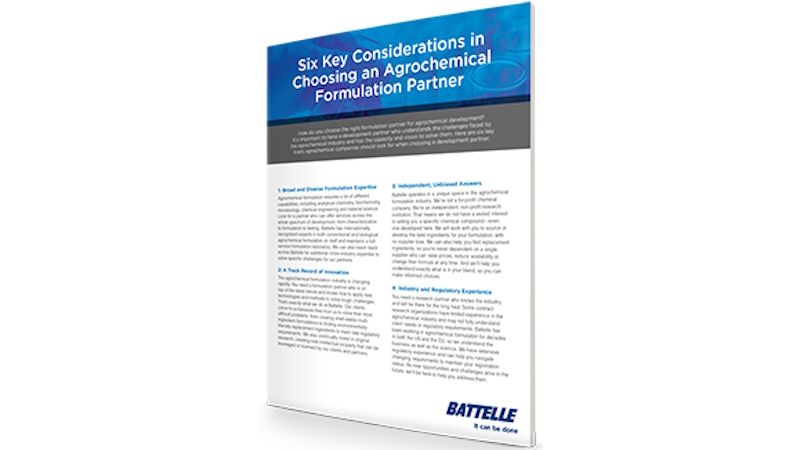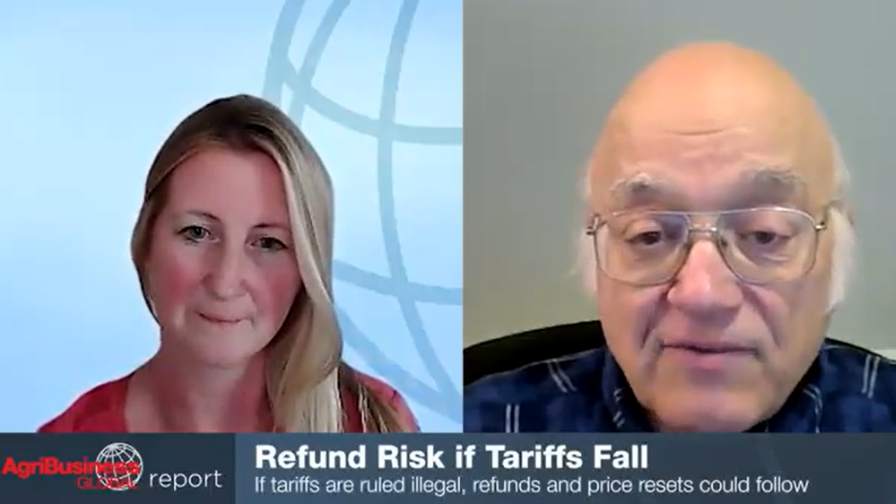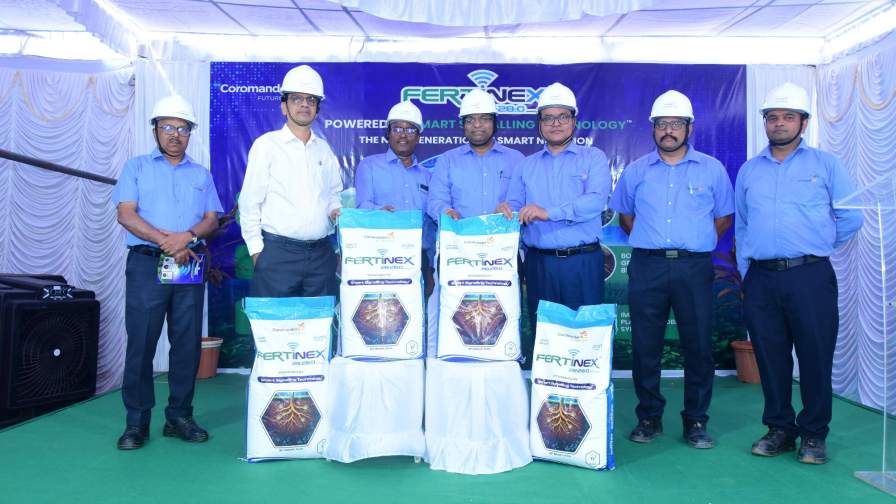Balancing Policy, Science, and Trade: PMFAI on the Future of Chlorpyrifos
In a recent interview with AgriBusiness Global, Pradip Dave, President of the Pesticides Manufacturers & Formulators Association of India (PMFAI), discusses what the five-year exemption for chlorpyrifos means for India’s agrochemical sector, how it could reshape global markets — particularly in developing nations —and PMFAI’s role in promoting safe, responsible, and evidence-driven pesticide management.
ABG: What does the five-year exemption for chlorpyrifos use mean for the Indian agrochemical industry? How do you see this impacting global markets, especially in developing countries?
Aparna Bhasin: The five-year exemption allows for the continued use of chlorpyrifos in India, in accordance with the approved label by the CIB&RC under the Ministry of Agriculture, Government of India, for the next five years (or until further notice from the Government of India).
India’s continued production of chlorpyrifos is expected to have a significant impact on the global market, particularly in developing countries. The country will manufacture chlorpyrifos technical and formulations for domestic use and export to both developed and developing nations, including the U.S., Australia, Brazil, Paraguay, Kenya, Russia, Zambia, Cameroon, Uruguay, Costa Rica, Indonesia, and others. These countries may continue to use chlorpyrifos in agriculture, animal health, locust control, termite prevention in building foundations, timber treatment, and more, in accordance with their approved labels and national regulations.
ABG: How is PMFAI working with the Indian government and international partners to ensure that the continued use of chlorpyrifos is responsibly managed and aligned with global environmental standards?
AB: Member companies of PMFAI are engaged in the manufacturing and formulation of chlorpyrifos for both domestic use and export. Within India, PMFAI works closely with the Government of India to support the development of regulatory guidelines, ensure timely approvals, and facilitate updates to product labels, leaflets, and packaging — all aimed at protecting human health, animals, and the environment.
PMFAI is also committed to training farmers and end users on the safe handling and application of chlorpyrifos and will distribute personal protective equipment (PPE) to minimize pesticide exposure. PMFAI also collaborates with partner pesticide associations in India, Asia, and African countries to promote good agricultural practices (GAP) and support the production of safe food, addressing critical global health and environmental challenges.
ABG: With resistance management cited as a major justification, how does PMFAI plan to support farmers in implementing integrated pest management (IPM) strategies that include chlorpyrifos while minimizing future resistance?
AB: PMFAI member companies actively promote integrated crop management (ICM), integrated pest management (IPM), and integrated resistance management (IRM) across India. We recognize that IRM is area-specific, while IPM must be tailored to specific locations, given the country’s vast size, diverse cropping systems, and the year-round prevalence of insect pests, diseases, and weeds under changing climatic conditions.
Chlorpyrifos has long served as a first line of defense in the crop cycle — used in soil treatment, seed treatment, foliar sprays, and drenching — to provide broad-spectrum control of insect pests and reduce populations below the economic threshold level. It is integrated with additional control measures such as biopesticides, biologicals, and other localized strategies. Many newly introduced insecticides are prone to rapid resistance development and may exert selection pressure on secondary pests, which can then emerge as major pests, leading to outbreaks and economic loss.
Conventional insecticides like chlorpyrifos are recommended for one to two applications per crop cycle to support broad-spectrum pest control, aid in resistance management, and extend the efficacy of other insecticide groups. Notably, after more than four to five decades of use in India, there have been no documented cases of resistance development to chlorpyrifos, making it a valuable tool within the IRM framework for the benefit of farmers and end users.
ABG: What are PMFAI’s expectations for the development or registration of cost-effective, viable alternatives during the five-year exemption period — and what role can international stakeholders play in that transition?
AB: PMFAI has been encouraging its member companies to develop and promote tank-mix strategies, as well as pre-mix combinations of two to three products, to help delay resistance and cross-resistance. The association has submitted regulatory guidelines to the CIB&RC for their review and approval, advocating for the use of twin/multipack and tank-mix formulations of 2–3 pesticides. During the five-year exemption period, PMFAI will continue to promote the judicious use of pesticides and discourage unnecessary applications.
International and domestic stakeholders are encouraged to develop, register, and launch viable, cost-effective alternative products in India. These efforts should take into account the country’s small- and medium-sized landholdings and key pest challenges, utilizing the relaxed regulatory pathways under Section 9(3) TIM & FIM and 9(4) TIM & FIM for domestic technical and formulation manufacturing, or under Section 9(3) & 9(4) for technical imports, as applicable.
ABG: How do you respond to criticism from NGOs and international media that the continued use of chlorpyrifos undermines global efforts to reduce persistent organic pollutants (POPs), and what steps are being taken to address misinformation and promote science-based policymaking?
AB: Non-governmental organizations (NGOs) and international media intensified their focus on chlorpyrifos after the European Union (EU) declined to renew its approval around 2020. PMFAI notes that while chlorpyrifos was widely manufactured and used in the West for decades, it was not previously classified as a persistent organic pollutant (POP), nor flagged for bioaccumulation, toxicity, or long-range transport (LRT). However, following its phase-out, the EU supported its inclusion in Annex A of the Stockholm Convention and Annex III of the Rotterdam Convention — moves PMFAI believes were influenced by commercial interests promoting alternative, and potentially more hazardous, pesticides produced by multinational corporations (MNCs).
According to PMFAI, India’s tropical climate plays a key role in the environmental behavior of chlorpyrifos. National data suggest the substance degrades rapidly due to high temperatures (ranging from 10°C to over 50°C), minimizing persistence and bioaccumulation risks. Additionally, India’s climatic conditions make long-range transport to Arctic regions highly unlikely. If residues are detected in those regions, PMFAI argues they are more likely to originate from temperate-zone countries such as those in the EU or Canada. Notably, the U.S. continues to allow chlorpyrifos use in both agricultural and non-agricultural applications under U.S. EPA-approved labels.
PMFAI emphasizes the need for science-based policymaking, in contrast to what it views as NGO-driven campaigns motivated by financial and commercial interests. The association has submitted the following arguments to oppose the listing of Chlorpyrifos in the Stockholm and Rotterdam Conventions:
- Tropical Climate Advantage: Chlorpyrifos rapidly degrades in India’s warm conditions across water, soil, air, and sediment. Typical application rates—such as 500 ml/ha using high-volume sprayers — further reduce the risk of environmental persistence or harm to humans, animals, or ecosystems.
- No Evidence of Long-Range Transport: There is no data from India confirming the LRT of chlorpyrifos to Arctic or subarctic regions.
- Proposal for Joint LRT Study: PMFAI has proposed that the Stockholm Convention allocate funding for joint studies in India to assess potential long-range transport, conducted under international supervision.
- Evaluation of Final Regulatory Actions (FRAs): The CRC-20 committee endorsed FRAs from the EU, Malaysia, and Sri Lanka to support Chlorpyrifos listing in Annex III of the Rotterdam Convention. PMFAI, however, raises concerns with these evaluations:
- European Union: The EU’s decision was based on inconclusive genotoxicity concerns. A 2019 EFSA statement cited chromosome aberrations and DNA damage as potential issues but acknowledged that definitive risk assessments could not be conducted due to lack of clear health-based reference values. PMFAI argues this decision was made on the possibility of adverse effects, not concrete evidence.
- Sri Lanka: PMFAI asserts Sri Lanka’s FRA relies on U.S. EPA reports and lacks country-specific scientific evaluation, failing to meet the criterion requiring risk assessments based on local conditions. Moreover, chlorpyrifos remains approved for use in the U.S., and Indian manufacturers such as Gharda Chemicals continue to supply it legally under EPA-approved guidelines. A cited 2002 study from Sri Lanka pointed to farmer misuse — such as overdosing, use of faulty equipment, and inadequate PPE — as the cause of high dermal exposure, not inherent toxicity.
- Malaysia: Chlorpyrifos use is restricted in Malaysia for public health pest control and banned for agriculture. PMFAI argues that risk assessments cited in the FRA lack scientific backing. For instance, the blood level cited (7.29 ng/ml) only indicates potential exposure — not a threshold linked to adverse health effects. Furthermore, the International Programme on Chemical Safety (IPCS) has not defined a universally accepted safe exposure level for chlorpyrifos.
Finally, PMFAI points out that chlorpyrifos is not currently listed in Annex III of the Rotterdam Convention, meaning exporters are not required to seek prior informed consent from importing countries — a key point for international trade.






